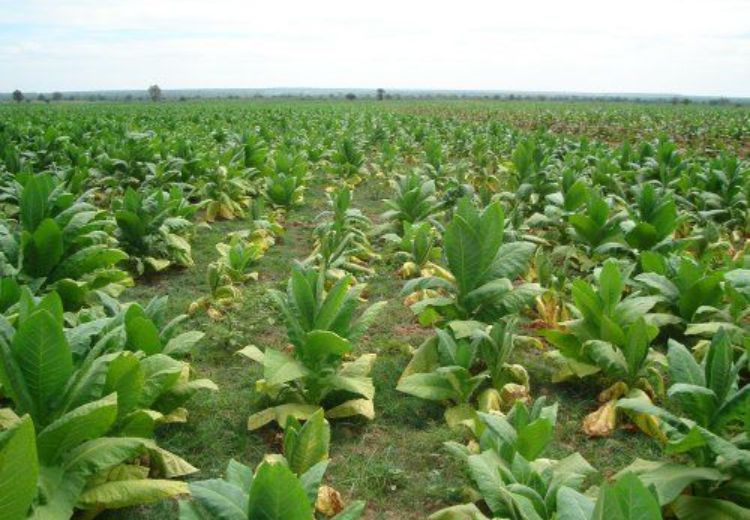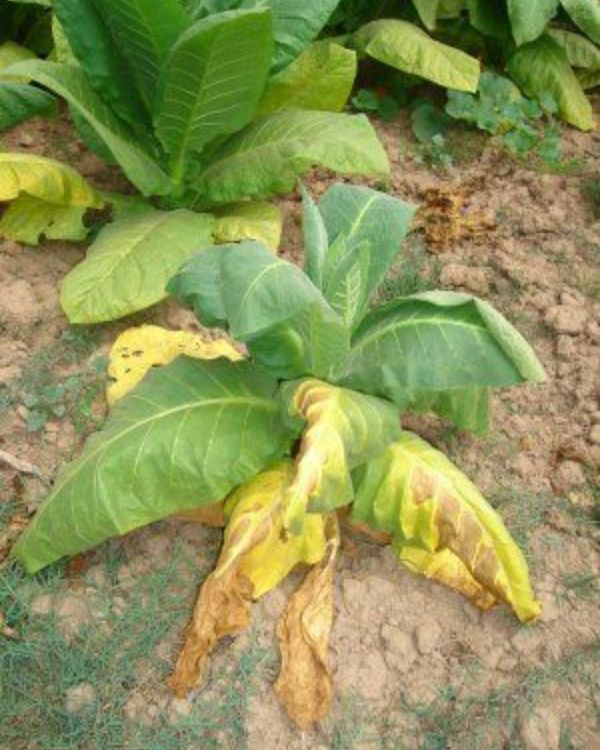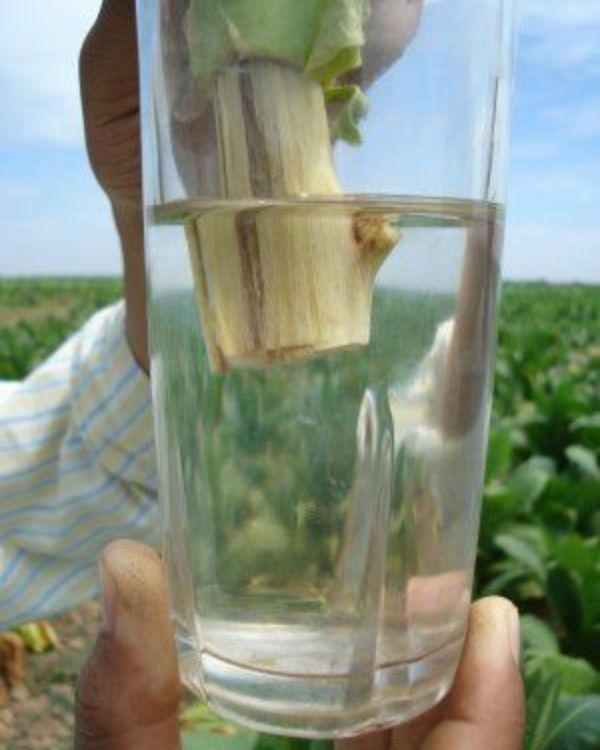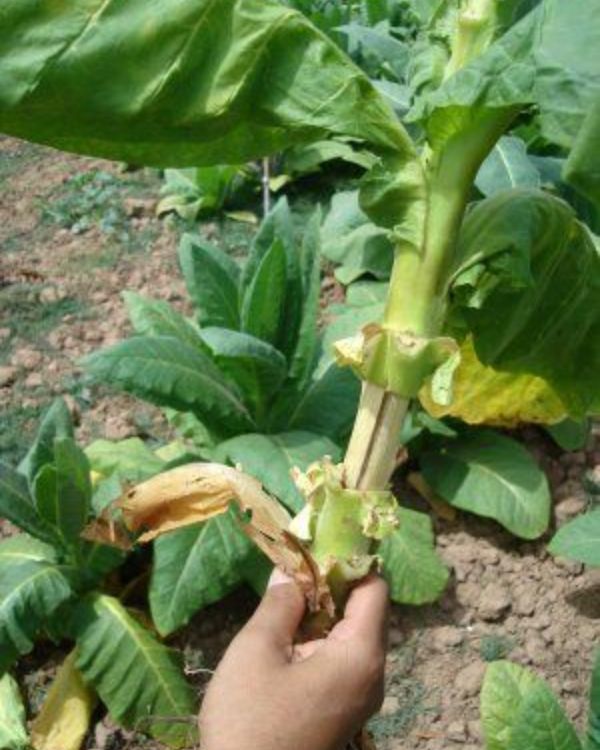Diseases and Pests
Bacterial Wilt
The first symptom of this bacterial disease is the drooping of one or two leaves which may recover at night. Initially, the leaves of one side of the plant wilt, while leaves on the other side appear normal. Affected leaves turn light yellow, occasionally get scalded or develop necrotic areas between the veins and at leaf margins. Ultimately, affected roots become blackened and decay if adequate water and moisture are present. Beneath the bark, along the affected stem, the discoloration of the vascular tissue forms dark and narrow streaks. If a stem segment containing discolored tissue is put into a glass of clean water, milky filaments (slime) will appear on the tip of the tissue.
The bacterium that causes the disease, Ralstonia solanacearum, originates from infected roots and may survive in the soil for years. It enters the roots through wounds or mechanical injuries or through wounds caused by nematodes.
Some practices are important for this disease management:
Stalk and root destruction immediately after harvest
Crop rotation preferable with grasses
Implement no till or minimum tillage production
Avoid late cultivations that can damage the root system
Sanitize tractors and implements after working in infected areas
Transplanting anticipation to the beginning of the recommend time, as the bacteria is more aggressive in higher temperatures
The use of tolerant varieties is the most effective method to prevent losses by the disease
ProfiGen released tolerant hybrids to Bacterial Wilt.
Symptom disease pictures:
See also
-
Diseases and Pests
- Cucumber Mosaic Virus - CMV
- Nematodes
- Potato Virus Y - PVY
- Yellow Stunt
- Diseases and Pests
- Bacterial Wilt
- Tobacco Mosaic Virus - TMV
- Curly top - BCTV
- Tomato Spotted Wilt Virus - TSWV
- Black Shank
Related products
-
PVH09
Bacterial wilt tolerant
-
PVH1452
Black Shank - Resistant
-
PVH1600
Bacterial wilt tolerant
-
PVH2254
Bacterial wilt tolerant
-
PVH2343
Bacterial wilt tolerant
-
PVH2414
PVY - Resistant
-
HB4151P
Fusarium and Bacterial Wilt - Tolerant
-
HB4180P
Fusarium and Bacterial Wilt - Tolerant
-
PGH5360
Comum Hybrids




